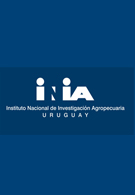ABSTRACT.- Sorghum-associated arthrogryposis and axonopathy is a rare congenital condition reported in ruminants and horses. Here, we describe the epidemiologic, clinical, and pathologic aspects of nine outbreaks of this condition in beef cattle in midwestern and southeastern Brazil (2014-2023). These regions are the most productive grain sorghum areas, where livestock producers use the straw extensively, producing a high regrowth during drought periods. All the affected pregnant cows had grazed sorghum stover for periods ranging from 25 days to 4 months. They showed abortion in the final and middle third of gestation or gave birth to calves with arthrogryposis, with overflexion or overextension of the limbs. No other gross lesions were observed. Typical neurohistologic lesions in four autopsied calves from different outbreaks included scarce to numerous axonal spheroids in the gray matter of the dorsal and ventral horns in the cervical spinal cord. Ultrastructurally, degenerated axons exhibited a segmental accumulation of residual bodies and degenerate organelles. The combination of sorghum stover consumption by the dams and characteristic spinal cord lesions in affected calves is distinctive and confirms the diagnosis. Sorghum consumption in the region was also associated with acute poisoning and cystitis-ataxia syndrome. For the first time in the Americas, we report a sorghum-associated congenital syndrome characterized by arthrogryposis and axonopathy in beef cattle.
© 2025 Elsevier Ltd. All rights are reserved, including those for text and data mining, AI training, and similar technologies.

